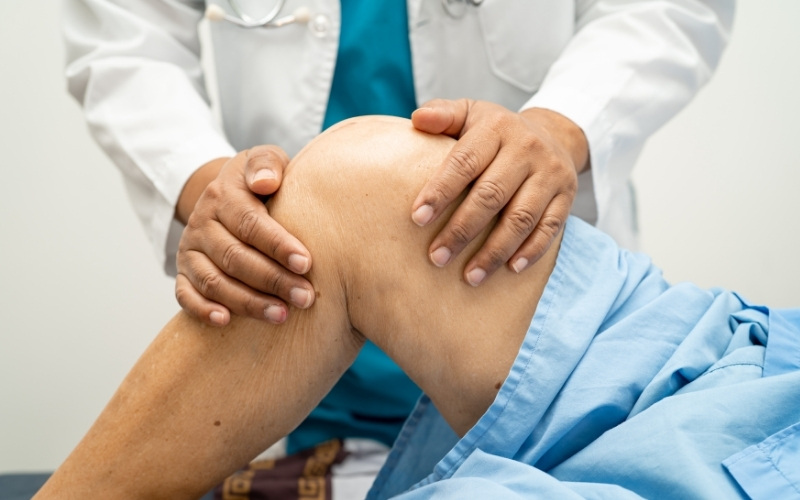Massage has long been recognized as one of the most effective natural therapies for relaxing the body and improving overall health. However, not everyone knows exactly how often should you get a massage to achieve the best results and enhance quality of life. The ideal massage frequency depends on several factors such as lifestyle, activity level, and personal health status. This article will reveal how often you should get a body massage to effectively boost your well-being.
What are the benefits of frequent massage?
Massage is not merely a relaxation therapy; it also brings a wealth of valuable benefits for both physical and mental health. Through rhythmic kneading and stroking movements, massage helps release tension, stimulate blood circulation, support recovery, and maintain balance in the body. Below are some of the most notable benefits you can experience from getting massages regularly:
- Reduce muscle tension and pain: When muscles become tight or fatigued, massage softens them, relieves soreness, and creates a sense of lightness and comfort—especially effective for those who exercise frequently or sit for long periods.
- Improve blood circulation: By stimulating the muscles and tissues, massage promotes better blood flow, ensuring oxygen and nutrients are more effectively delivered to each cell, which supports the body’s healing process.
- Deep relaxation and stress relief: Gentle, rhythmic massage techniques help the body unwind, release mental stress, and bring about a feeling of calm and comfort.
- Enhance sleep quality: When the body is relaxed and the mind is at ease, it becomes easier to fall asleep, enjoy deeper rest, and wake up refreshed.
- Support mental health and emotional balance: Regular massages help reduce anxiety and stress, improve mood, and maintain a positive, stable mental state.
- Prevent chronic pain and boost recovery: Frequent massages reduce the risk of persistent pain and shorten recovery time after injuries or muscle fatigue.
- Improve joint mobility: Massage enhances smooth joint movement, increases body flexibility, and supports better performance in physical activities.

Getting massages regularly and consistently not only improves joint health and sleep quality but also provides complete relaxation for the body.
How often should you get a massage?
To maintain the benefits of relaxation, stress relief, and overall health support, it is recommended to get a massage once a month. This frequency works well for most people, helping the body stay flexible, the mind relaxed, and preventing the buildup of muscle tension. However, depending on your needs and health condition, the frequency can vary:
- Individuals who exercise regularly or play sports: Weekly or bi-weekly massages can help improve performance and speed up muscle recovery.
- Individuals with health issues or chronic pain: May require 1–2 sessions per week as advised by a professional, then gradually reduce the frequency as symptoms improve.
- Individuals seeking mental stress relief: Monthly massages are often enough to help stabilize mood and enhance mental well-being.
Regardless of the frequency you choose, you should consult with a registered massage therapist to create the most suitable schedule based on your physical condition and personal circumstances.

Getting a massage once a month is widely recognized as the most appropriate frequency for improving overall health.
How do you find the right massage frequency for your needs?
To determine your ideal massage frequency and figure out how often should you get a massage, you need to assess your overall health condition, lifestyle, and personal goals. This not only helps maximize the effectiveness of the treatment but also ensures it fits your schedule and budget. Below are key factors to help you decide how often should you get a massage:
Assess your level of physical activity
If you engage in regular sports or perform physically demanding work, your muscles are more prone to tension and potential soreness. In this case, getting massages weekly or bi-weekly can help with recovery and injury prevention.
Consider your health condition or existing injuries
For issues such as chronic pain, muscle tightness, sports injuries, or musculoskeletal disorders, massage frequency should be determined based on recommendations from a Registered Massage Therapist (RMT) or physician. In these situations, you might need 1–2 sessions per week initially, then gradually reduce as your condition improves.

Evaluating your current health and any injuries is essential when deciding on a suitable massage schedule.
Assess your stress levels and mental well-being
If you often face stress, pressure, or insomnia, regular weekly massages or 2–3 sessions per month can help improve both your physical condition and mental state. When your body is relaxed, muscles loosen, and your nervous system is balanced, you’ll find it easier to fall asleep, enjoy deeper rest, and feel more energized the next day.
Consider your budget and time availability
Massage offers many health benefits, but to achieve optimal results, it needs to be done regularly and maintained over the long term. This means you must take into account two practical factors – budget and time.
- Budget: Each massage session comes with a cost. If you choose a frequency that exceeds your financial capacity, it will be hard to sustain your routine.
- Time: A busy life with work, family, and other activities can make it challenging to schedule regular sessions. If you set an overly frequent schedule but can’t maintain it consistently, the benefits may be interrupted.
- Balancing both factors: When you can align both cost and time, you’ll be more likely to maintain massage as a consistent part of your lifestyle. This ensures your body receives continuous care and your overall health improves.

Your personal budget and time availability also play a decisive role in determining how often should you get a massage.
Consult a Massage Therapy Professional
Choosing your massage frequency is not simply a matter of personal preference or convenience – it should be based on professional assessment to achieve optimal results and avoid potential health risks. This is why you should consult a Registered Massage Therapist (RMT) or an experienced professional:
- Accurate assessment of your condition: A professional can examine your muscles, joints, blood circulation, and stress levels to determine your actual needs.
- Defining specific goals: Whether your aim is relaxation, pain relief, injury recovery, or improving athletic performance, the specialist will tailor the frequency to suit your specific objectives.
- Risk prevention: Certain health conditions — such as cardiovascular disease, high blood pressure, acute injuries, or musculoskeletal disorders — require special massage protocols. A professional will help you avoid techniques or frequencies that may be harmful.
- Personalized treatment plan: Each person’s body type, lifestyle, and recovery capacity are different. A specialist will create a customized massage schedule to optimize results and ensure long-term suitability.
- Monitoring and adjustments: Over time, the professional can reassess your progress and adjust the frequency to maintain or enhance therapeutic benefits.
How often should you get a massage along with all related details about choosing the right frequency has been revealed in this article. In general, the ideal interval between massages depends on your needs, physical condition, and overall health quality. Above all, listen to your body and seek advice from a massage therapist to create a personalized schedule that delivers lasting benefits.

